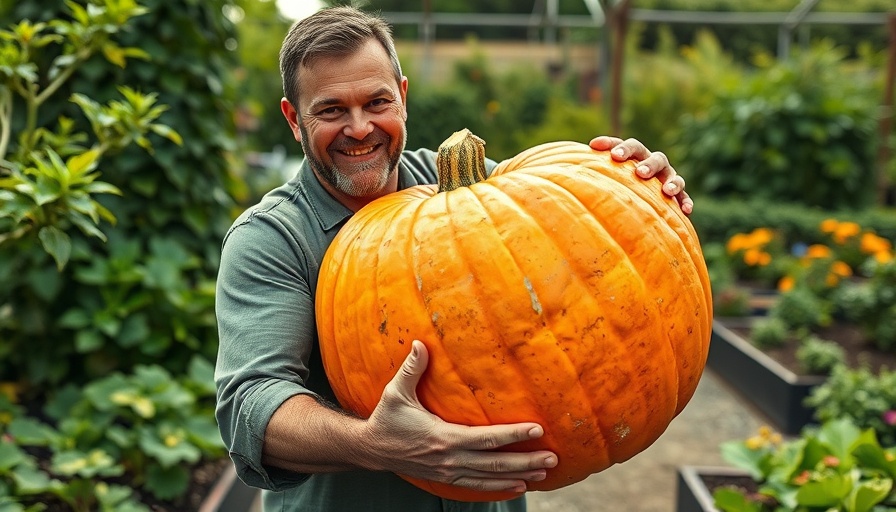
Why Growing Giant Pumpkins Is a Fun Challenge
If you’ve ever walked through a fall market, gazing at those massive pumpkins, you know that growing your own can be an incredibly rewarding endeavor. Embracing the challenge of cultivating giant pumpkins not only satisfies your gardening aspirations but also serves as a wonderful community activity, especially among friends and neighbors in Metro Vancouver. This article, inspired by the video Here's How To Grow MASSIVE Pumpkins Before Halloween, explores how to grow giant pumpkins while making the most of your space and resources.
In Here's How To Grow MASSIVE Pumpkins Before Halloween, the discussion dives into the nuances of pumpkin gardening, exploring key insights that sparked deeper analysis on our end.
Choosing the Right Variety for Your Goals
The journey to growing massive pumpkins begins with selecting the right seeds. For aspiring pumpkin growers, varieties like Atlantic Giant and Big Max are excellent choices for size. Conversely, if you plan to carve or decorate, options such as Spooky or Jack Be Little can also enrich your garden.
Understanding what you want to achieve with your pumpkins is key. Are you aiming for jaw-dropping size to impress your neighbors or seeking tasty options for pies and decorations? This choice influences your success in the garden.
Optimal Planting Strategies for Small Spaces
Even in urban environments like Metro Vancouver, limited space doesn’t need to hinder your gardening ambitions. Pumpkins thrive in sunny, open areas, so consider planting your giants at the edges of raised beds to maximize sunlight exposure. With careful planning, such as letting vines spread and ensuring ample room, you can cultivate a thriving pumpkin patch right in your backyard.
The Importance of Nutrition for Your Pumpkins
Heavy feeders by nature, pumpkins require nutritious soil to flourish. Enriching your garden with compost may provide the necessary nutrients to help your pumpkins reach their full potential. As an added tip, applying a fruit and flower-forward fertilizer during the growing season can drastically improve your yields.
Local gardeners in small spaces often incorporate compost from their own kitchens, making this a budget-friendly solution that supports eco-friendly practices.
Managing Common Challenges: Pests and Mildew
Even the most dedicated gardeners face challenges with pests and diseases. Squash bugs and powdery mildew can be common foes in pumpkin gardening. Regular inspection and intervention, such as removing pests by hand or applying natural treatment methods, can keep your pumpkin plants healthy and happy.
By familiarizing yourself with signs of distress, you can ensure healthier plants and a bountiful harvest.
Your Path to a Successful Harvest
Determining the right time to harvest your pumpkins is crucial, as premature harvesting can lead to disappointing results. Observing the color and condition of the stem and checking for maturity indicators ensure that your pumpkins are ready for the big reveal!
With the right techniques and a bit of patience, you could find yourself hosting the best pumpkin display in your neighborhood.
So, gather your tools and get ready to embark on this agricultural adventure—growing giant pumpkins is a fantastic way to engage with your community while enjoying the fruits of your labor. As you learn the ropes, you may find a hidden passion connecting you to nature and those around you.
 Add Row
Add Row  Add
Add 




Write A Comment